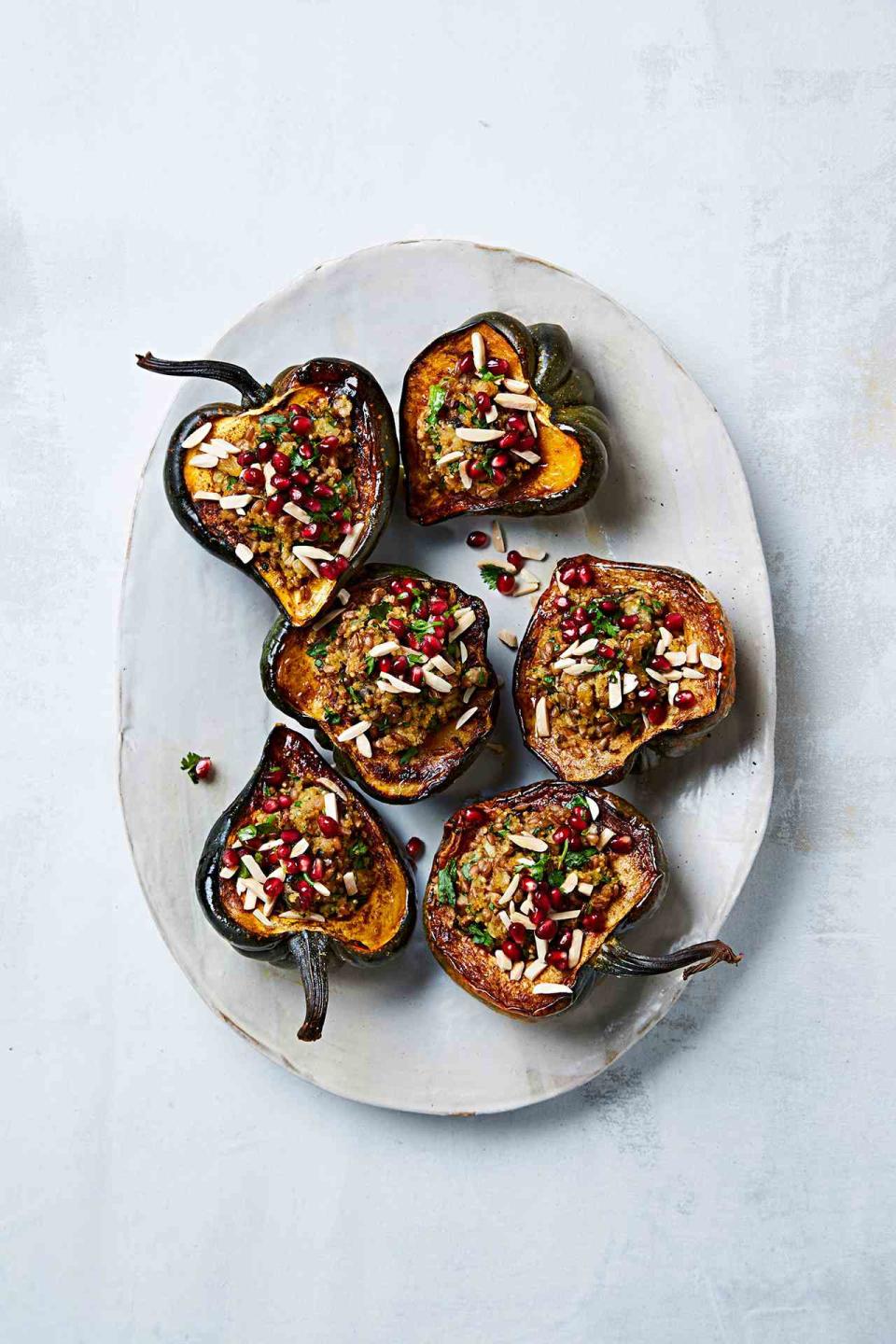The Best Way to Cook Acorn Squash
That classic icon of autumn farm stands and holiday tables, the acorn squash, is named for its adorable shape. Its season runs from early fall into winter. While other winter or hard shell squash like the larger butternut and or thinner skinned delicata, are suited for many preparations, acorn squash is best prepared simply because it is compact with a large cavity and skin that's hard to peel. Here's what you need to know to cook acorn squash.
Buy acorn squash when the color is deep green with a little bit of orange—unless it is a variegated (striped) variety, in which case look for vivid coloring. If a green squash has become mostly orange, then it has been stored too long and the interior will most likely be dry and spongy. At the market you can test for quality by lifting one; it should feel firm and heavy for its size. The weightiness is a sign of moisture content, indicating the flesh will cook well. Acorn squash should have matte skin without holes or soft spots. When the stem is attached, it can be kept at room temperature for two to three weeks. Once the stem is gone, moisture will be lost more quickly. Pieces of cut squash can be wrapped and stored in the refrigerator for three to five days; discard if they become soft or slimy.
How to Prep Acorn Squash
Because it is compact with a large cavity and skin that's hard to peel, there aren't a whole lot of ways to treat this squash. Consider that a gift from the culinary gods; there's no need to bother with the peeling, dicing, or other preparations you might be tempted to try with a larger squash or one with a thinner skin. Most recipes for acorn squash involve simply halving it or cutting it into wedges and cooking with the skin on. Hold the knife with a firm grip when cutting squash, and keep your fingers out of the way lest it roll away from you.
Baking and Roasting
The simplest and probably the best thing to do with acorn squash it to split in half, scoop out the seeds, drizzle it with maple syrup or sprinkle with brown sugar, and add a pat of butter and a sprinkling of salt and bake. Two halves can even fit into a toaster oven. Once cut and baked, the squash halves can be served as is or the flesh can be scraped off the skin and chopped or pureed if desired and used for soup or a side dish recipe. Cooked acorn squash purée also lends itself to sweet recipes like pie.
Or cut the acorn squash halves into wedges and toss with olive oil then roast plain or seasoned with warm spices such as chili or sesame to serve as a side dish or toss with a salad.

Louise Hagger
Another preparation to consider is using the acorn squash as a container for a holiday side dish or vegetarian main.
When cooked, the squash skin softens and can be eaten too. And the seeds? Make the most of them too. They can be roasted separately; tossed with oil, salt and spices of your choice and spread out onto a baking tray to brown. Try roasted squash seeds as a crunchy topping for a salad or a delicious pre-dinner snack.

